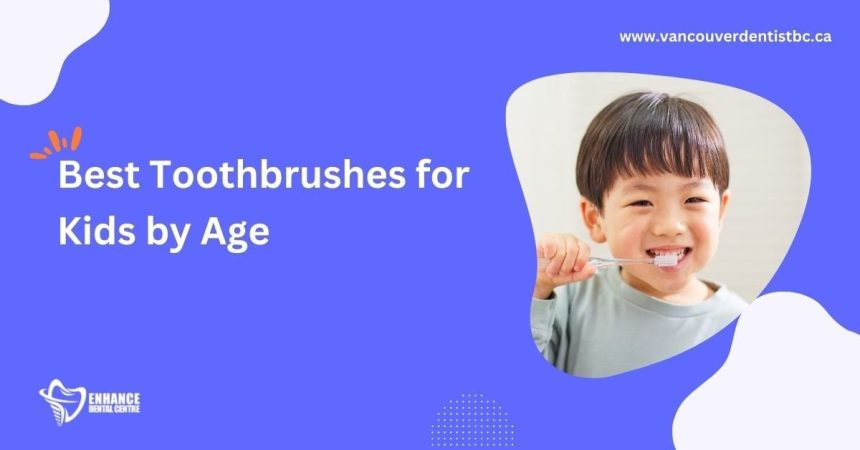Choosing Your Child’s Burnaby Orthodontist: A Parent’s Guide
The journey to a perfect smile for your child is an exciting one, and a critical part of that journey involves selecting the right children’s orthodontist in Burnaby. This decision isn’t just about straightening teeth; it’s about fostering long-term oral health, boosting self-esteem, and ensuring a positive experience for your child. With numerous options available, navigating the process can feel overwhelming. This comprehensive guide will illuminate the path, helping you make an informed choice that sets your child up for a lifetime of healthy smiles.
Why Choosing the Right Children’s Orthodontist in Burnaby Matters
A child’s dental development is a dynamic process. Early intervention and proper orthodontic care can prevent more complex issues down the line, saving time, discomfort, and expense. A skilled orthodontist doesn’t just correct misalignments; they create a foundation for optimal function, aesthetics, and overall well-being. The right professional will not only possess the technical expertise but also the empathy and communication skills to make your child feel comfortable and confident throughout their treatment.
Key Factors to Consider When Selecting a Burnaby Orthodontist
When it comes to pediatric orthodontics, not all practices are created equal. Here are the essential elements to evaluate:
1. Specialization and Experience with Children
Look for an orthodontist who specifically focuses on or has extensive experience treating children. They understand the unique developmental stages of a child’s mouth and are adept at handling the particular challenges and anxieties that young patients might experience. This specialization ensures they are up-to-date on the latest techniques and technologies in early orthodontic evaluation.
2. Qualifications and Credentials
Verify the orthodontist’s credentials. They should be a certified orthodontic specialist, meaning they have completed advanced training beyond dental school in orthodontics and dentofacial orthopedics. Membership in professional organizations like the Canadian Association of Orthodontists (CAO) is also a good indicator of commitment to the field.
3. The Practice Environment and Staff
A welcoming and child-friendly atmosphere is paramount. Observe the reception area and treatment rooms. Are they designed to be engaging for children? How does the staff interact with young patients? A friendly, patient, and supportive team can significantly reduce a child’s apprehension.
4. Technology and Treatment Options
Modern orthodontic practices utilize advanced technology to make treatments more efficient and less invasive. Inquire about the types of diagnostic tools they use (e.g., digital X-rays, 3D imaging) and the treatment options available, such as traditional braces, clear aligners, and other innovative solutions. The best orthodontist in Burnaby will offer a range of choices tailored to individual needs.
5. Communication and Patient Education
An excellent orthodontist will take the time to explain the treatment plan clearly to both you and your child. They should be willing to answer all your questions and address any concerns. Understanding the process fosters trust and cooperation.
6. Location and Convenience
Consider the office’s location relative to your home or school. Frequent appointments are necessary, so a convenient location can make a big difference in managing your schedule and ensuring your child doesn’t miss too much school.
7. Cost and Payment Options
Orthodontic treatment can be a significant investment. Discuss the total cost upfront, including any potential additional fees. Understand the payment plans offered and what your insurance may cover. Transparency in billing is crucial when considering braces in Burnaby.
The Importance of Early Orthodontic Evaluation
The American Association of Orthodontists recommends that children have their first orthodontic visit by age seven. This early evaluation is not necessarily to start treatment but to monitor growth and development. At this stage, an orthodontist can:
- Identify potential problems with jaw growth and tooth eruption.
- Assess habits like thumb-sucking or tongue thrusting that can affect alignment.
- Determine if early intervention is necessary to guide jaw growth or create space for permanent teeth.
- Provide a roadmap for future treatment, if needed.
This proactive approach can often simplify or even prevent the need for more extensive treatment later on.
What to Expect During Your First Consultation
Your initial visit to a children’s orthodontist in Burnaby typically involves several key steps:
- Patient History and Examination: The orthodontist will review your child’s dental and medical history and conduct a thorough examination of their teeth, bite, and facial structure.
- X-rays and Imaging: Diagnostic X-rays, photographs, and sometimes 3D scans may be taken to get a comprehensive view of your child’s oral anatomy.
- Discussion of Findings: The orthodontist will explain their findings, discuss any orthodontic issues identified, and outline potential treatment options.
- Treatment Planning: If treatment is recommended, a personalized treatment plan will be developed, including the type of appliances to be used, the estimated duration of treatment, and the associated costs.
- Answering Your Questions: This is your opportunity to ask any questions you may have about the treatment, the process, or the practice.
Signs Your Child Might Need Orthodontic Treatment
While a professional evaluation is essential, here are some common signs that might indicate your child could benefit from orthodontic assessment:
- Crowded or overlapping teeth
- Gaps between teeth
- Teeth that protrude (stick out)
- Bite problems (e.g., underbite, overbite, crossbite)
- Difficulty chewing or biting
- Speech impediments
- Mouth breathing
- Premature loss of baby teeth
- Jaw pain or clicking
The Role of the Orthodontist in Building Confidence
Orthodontic treatment is not just about physical alignment; it profoundly impacts a child’s psychological well-being. A misaligned smile can lead to self-consciousness, teasing, and a reluctance to smile openly. By correcting these issues, a skilled orthodontist helps children develop a greater sense of confidence and self-esteem. A beautiful, healthy smile can empower them to engage more fully in social interactions and feel more comfortable in their own skin.
Navigating Treatment Options
The world of orthodontics offers various solutions, and the best choice depends on your child’s specific needs and your family’s lifestyle:
- Traditional Braces: Still a highly effective and reliable option, featuring metal brackets and wires.
- Ceramic Braces: Similar to metal braces but with tooth-colored brackets that are less noticeable.
- Clear Aligners: Removable, transparent trays that gradually move teeth. Popular for older children and teens who are responsible enough to wear them consistently.
- Phase I Treatment: Early intervention to address specific growth and development issues.
- Phase II Treatment: Comprehensive treatment typically initiated when most permanent teeth have erupted.
Your orthodontist will guide you through these options, explaining the pros and cons of each for your child’s unique situation.
A Partnership for a Lifetime of Smiles
Selecting the right children’s orthodontist in Burnaby is a partnership. It involves open communication, trust, and a shared commitment to your child’s oral health. By doing your due diligence and choosing a practice that prioritizes your child’s comfort, well-being, and long-term dental health, you are investing in a brighter, more confident future for them.
Remember, the goal is not just a straight smile, but a healthy, functional, and beautiful smile that your child will be proud to show off for years to come.
Source Links:
American Association of Orthodontists (AAO)
Canadian Association of Orthodontists (CAO)
copyright 2025 thebossmind.com





